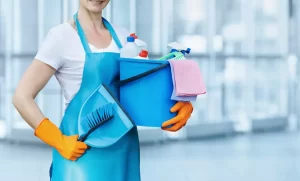Let’s imagine our life without green areas, gardens, vegetables, and fruits. Surely it will be a very unhealthy life. All of us are looking for several ways to save money, eat more healthy food, or have a source of vegetables (a vegetable garden, for example), but we don’t know how to do that in a simple and efficient way. Planting your vegetables is a very interesting hobby you can take. If you don’t know how to start maybe you need some gardening tips.
You can do wonders even with a small space, so you don’t need to have a large yard to create your garden. Once everything is in place, the rest is very simple.
People say that gardening can be expensive, as it requires numerous tools which can sum up to a decent amount of money. So how can you minimize your gardening costs? Let’s consider indoor seed starting as part of the answer. Many people are convinced that indoor seed opening requires loads of time and energy, which isn’t true. You can start with a few seeds and get the same results as you would with a lot of seeds. You can always start with what you have on hand, so there is no need to buy anything expensive or special. Plus, with minimal effort and work, you can save flower seeds, herb seeds and vegetable seeds that you’re already growing and plant them during the following gardening season. As we know, everyone needs a guide to achieve perfect results; these gardening tips can help you start seeding indoors.
Best tips for starting seeds indoors
To start seeding, you’ll need a mix of different seeds and a few tools like planting pots and maybe some labels for them. Then you can do the following:
1) Start to fill up the pots

Fill the pots with the seeds you have in mind, start to mix, then moisten. The mix should be wet but not soaked (a spray bottle may help). You also can moisten the seeds before adding them to the containers.
2) Push the seeds down

Smoothly press the seedlings into each pot. If the seed package label recommends it, cover the seeds carefully.
3) Label each container and cover it

Labeling your pots can help you know which plants are growing healthily and which ones need some extra work. Lightly cover the containers with transparent plastic wrap, which would help maintain the humidity and moisture of the seed.
4) Put the pots in light and warmth

Put your seed pots in a warm area. The perfect temperature for most seeds is about 24 °C; more than 33 °C may affect seedlings health. Once the little seedlings arise, 22 °C is okay. Sunlight is very important too. To increase the seedlings’ natural daylight portion, plant the pots next to a low-intensity light source (Light under a cupboard or a cabinet in the kitchen is good).
5) Provide them with some air

When the plants start to rise, take off the plastic wrap you have put before and let them breathe a little bit.
6) Keep attention, and watch them

When they’re about 3 inches tall, your seedlings need an upgrade. Move them into larger pots, this time in a soil mix.
Fertilize carefully with a diluted specific mix.
Gardening Tips to help you to maintain a healthy and amazing garden
-
1. Plan before you plant.

Randomly planted gardens are rarely good-looking. So you can start by writing a list of vegetables and fruits that your family eats regularly and the ones you would like to grow.
Then you should do some research to find out which plants on your list are easiest to grow in your area.
-
Try to choose plants that can adapt to drought conditions.

If you live in a region where water supply is limited, your plants will be drastically affected. Thankfully, there are some precautions and steps to take in order to avoid that.
The first step is to (preferably) plant vegetables and fruits with low water requirements, such as varieties of zucchini, peppers, and cacti for decoration.
-
Try to choose healthy seedlings.

One of the safest ways to avoid plant wilting and have attractive plants in your small garden is to do your best to pick healthy seeds or plants.
Check regularly for mold and discolored leaves, and do not hesitate to take the plant out of the pot gently to check the health of the plant’s roots.
-
Keep your soil healthy.

Healthy plants require nutrient-rich soil.
Without good soil, plants may not grow, survive, and maybe vulnerable to diseases.
Add some good fertilizers (within limits) to increase the nutrients in your soil.
-
Enclose your plants with artificial grass

You can always rely on artificial grass to make your garden look fresher, greener, and more attractive.
The energetic and vibrant green color of the grass can perfectly make the colorful blossoms and the various flowers in your garden stand out.
-
Know how to deal with common problems.

Ladybugs can help save your plants from diseases.
There are also multiple treatments for different molds that may affect your plants.
To maintain your garden’s look, you need to know how to quickly handle the most common issues that could affect your plants. Asking a professional gardener may help with that.






